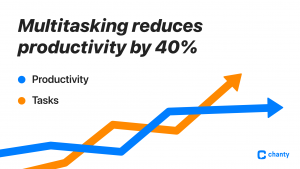Racking up points from a great sports sponsorship isn’t enough. Columnist Joshua Reynolds says scoring more than the competition is the new definition of success — and the right approach to analytics can help.

As the NBA and Stanley Cup playoffs rage and the Olympics loom, untold dollars are pouring into sports sponsorships as major brands hope to bring home some gold of their own. Betting on centerpiece sporting events such as these has been a no-brainer for decades, and putting your brand in the hands of a team or athlete is a fairly safe play to call.
But which athlete do we pick? How do we tie our brand to the sport? What form should the sponsorship take? And are our results better than the competition’s, or are we just riding the same coattails that everybody else is?
With the advent of new marketing analytics capabilities and increasing business pressure, marketers now have to clear a higher bar of accountability. Just exactly how should brands measure the success of their sponsorships?
Understanding the nuances of sponsorship effectiveness takes time, effort and the wherewithal to sort through mountains of data, looking for data patterns that correlate to what’s driving value for the sponsor. Traditionally, this has been grueling work, but thanks to recent advances in explanatory analytics, it’s now possible to do this quickly, cost-effectively and accurately.
As my colleague, Josh Anish, recently wrote in a post about marketing and the Olympics, sponsorship analysis can yield surgically precise, actionable insights that help you score more revenue than your rivals — and that’s the whole point.
Here are three tips for taking advantage of performance-enhancing data and finding ways to boost your sponsorship’s effectiveness:
Root your metrics in KPIs, not engagement
Throughout the NBA playoffs, numerous players have appeared in ads broadcast during games. In one series of ads, a gaggle of players pretends to be a suburban family. In another, Cavaliers guard Kyrie Irving nonchalantly folds laundry.
For all of these ads, the point isn’t just to get people talking on Facebook or Twitter. When big brands sign contracts with high-profile athletes, negotiate content rights, and pay for expensive TV ad time, their goal isn’t just increased buzz — it’s increased business.
The lesson? Your goal is to increase business performance. So don’t use social metrics as a proxy for success unless you’ve tied those metrics to KPIs.
Someone might retweet a funny ad centered around Warriors forward Draymond Green making a sandwich, but that doesn’t mean the person is going to consider buying a product, let alone become a loyal customer. Instead of tallying engagement metrics, correlate your social data to the KPIs your CFO would care about, and find the consumer signals that are predictive of historical KPI shifts. Those are the signals to track.
Use consumer interest groups to measure the right data
Brands partner with athletes and build sponsorship campaigns around sporting events primarily to reach sports fans. This is a wide, diverse audience, yes, but not everyone is a sports fan. So when we look at social data, why do so many of us ignore the difference?
When measuring ROI success, it’s important to analyze the right target audiences. With social data, this can be achieved a number of ways.
Under Armour, for example, might work with a reduced consumer data set that includes only people who follow the NBA and Golden State Warriors on social media or who participate in basketball-themed online forums. It’s within this targeted group that marketers should look for the predictive correlations mentioned above.
Set your own gold standard, then exceed it
Using predictive data modeling, brands can get a fairly accurate sense for what sort of lift they could expect from any given sponsorship.
Suppose your brand is running a big sponsorship campaign featuring Lebron James during the gold medal basketball game at the Olympics this summer. You’ve defined your target audience and modeled the predictive signals you need to look for. Great. So now that you’re positioned to do what’s expected, what’s next?
Now it’s time to find ways to beat the norm. Now it’s time to make sure you’re not just riding the same rising tides that are also helping your competitors.
Now it’s time to explore the data patterns that occur around those predictive signals and learn from them.
Predictive signals are inevitably going to spike during a big game: More people will be tuned in, which means the size of the target audience (i.e., people following basketball online) will grow, which means more consumer data and insights into what works.
With the right approach, you can do more than just predict success. You can explain it, and that lets you improve upon it.
Think about it. If you don’t set your own goals, somebody else will eventually set them for you. So decide for yourself what your sponsorship’s full potential is, then use an explanatory approach to analytics to find ways to do better than your competition.
Takeaway questions
- How do I measure consumer signals that correlate to KPIs instead of just buzz and engagement?
- How do I know if my sponsorship is outperforming a baseline of what I should expect, or if I’
(32)







